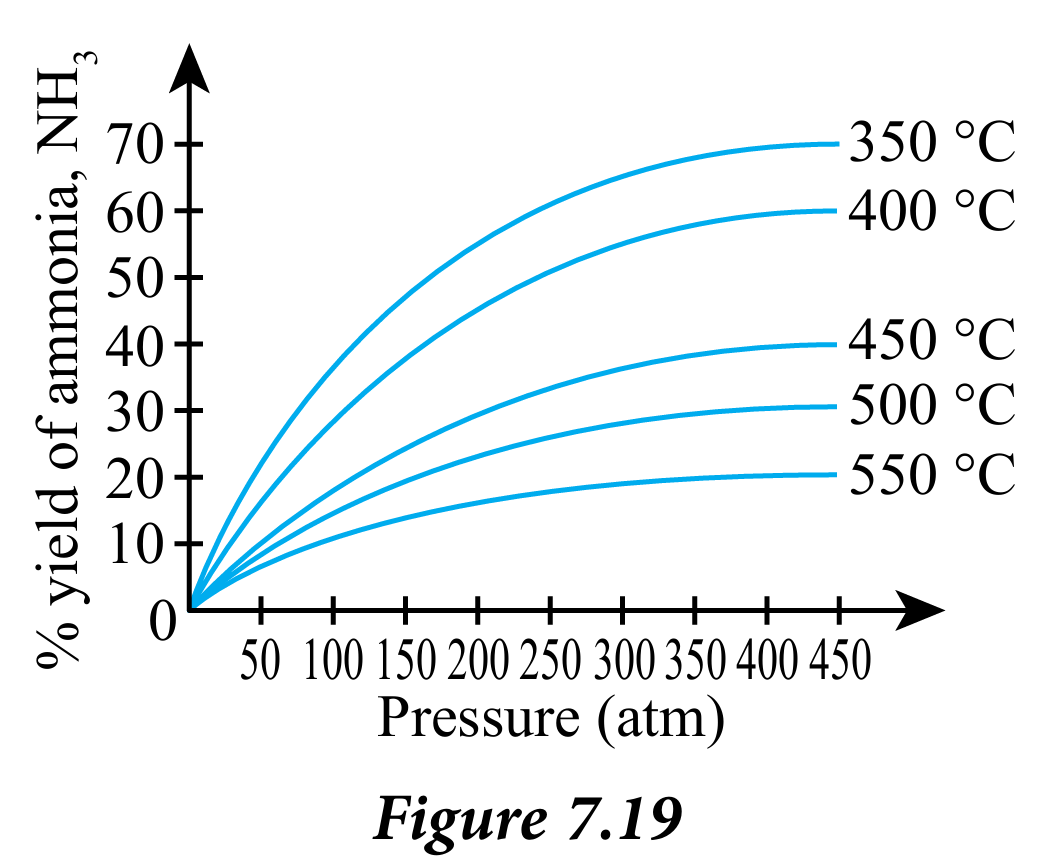Question 1:
Fill in the blanks.
(a) Meat cooks faster if it is cut into _________ sizes.
(b) In the refrigerator, the __________ temperature decreases the growth of bacteria that causes food decay.
(c) Food cooks faster in a pressure cooker because of high ____________.
(d) Coal burns faster in small chips because of the large surface area that is ___________.
Answer:
(a) smaller
(b) low
(c) pressure/temperature
(d) exposed
Fill in the blanks.
(a) Meat cooks faster if it is cut into _________ sizes.
(b) In the refrigerator, the __________ temperature decreases the growth of bacteria that causes food decay.
(c) Food cooks faster in a pressure cooker because of high ____________.
(d) Coal burns faster in small chips because of the large surface area that is ___________.
Answer:
(a) smaller
(b) low
(c) pressure/temperature
(d) exposed
Question 2:
In industry, ammonia, NH3 is produced by the direct combination between nitrogen, N2 and hydrogen, H2. Ammonia, NH3 is used to make nitrogeneous fertilisers.
Figure 7.19 shows the percentage yield of ammonia, NH3 under different conditions.

(a) State the effect on the percentage yield of ammonia, NH3 with increasing:
(i) Temperature
(ii) Pressure
(b) Explain the advantages and disadvantages of using 350 °C and 550 °C in the process of producing ammonia, NH3. How can the disadvantages be overcome?
Answer:
(a)(i) The higher the temperature, the lower the percentage of ammonia produced
(a)(ii) The higher the pressure, the higher the percentage of ammonia produced
(b)
Low temperature (350 °C)
• The percentage of products is high; rate of reaction is low.
High temperature (550 °C)
• The percentage of products is low; rate of reaction is high.
Adding a catalyst can increase the rate of reaction, enabling the reaction to occur at low temperature.
In industry, ammonia, NH3 is produced by the direct combination between nitrogen, N2 and hydrogen, H2. Ammonia, NH3 is used to make nitrogeneous fertilisers.
Figure 7.19 shows the percentage yield of ammonia, NH3 under different conditions.

(a) State the effect on the percentage yield of ammonia, NH3 with increasing:
(i) Temperature
(ii) Pressure
(b) Explain the advantages and disadvantages of using 350 °C and 550 °C in the process of producing ammonia, NH3. How can the disadvantages be overcome?
Answer:
(a)(i) The higher the temperature, the lower the percentage of ammonia produced
(a)(ii) The higher the pressure, the higher the percentage of ammonia produced
(b)
Low temperature (350 °C)
• The percentage of products is high; rate of reaction is low.
High temperature (550 °C)
• The percentage of products is low; rate of reaction is high.
Adding a catalyst can increase the rate of reaction, enabling the reaction to occur at low temperature.
Question 3:
Car exhaust gas contains polluting gases formed from the burning of fossil fuels in the car engine.
(a) Name three polluting gases in the car exhaust.
(b) In the car engine, nitrogen, N2 combines with oxygen, O2 to produce nitrogen monoxide, NO. At room temperature and pressure, this reaction occurs very slow.
Why can this reaction occur in the car engine?
Answer:
(a) Excess unburnt hydrocarbon, carbon monoxide, CO and nitrogen oxide, NO
(b)
In the car engine, there is
• high temperature
• high pressure
Both factors can increase the rate of reaction.
Car exhaust gas contains polluting gases formed from the burning of fossil fuels in the car engine.
(a) Name three polluting gases in the car exhaust.
(b) In the car engine, nitrogen, N2 combines with oxygen, O2 to produce nitrogen monoxide, NO. At room temperature and pressure, this reaction occurs very slow.
Why can this reaction occur in the car engine?
Answer:
(a) Excess unburnt hydrocarbon, carbon monoxide, CO and nitrogen oxide, NO
(b)
In the car engine, there is
• high temperature
• high pressure
Both factors can increase the rate of reaction.
